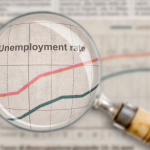
Affirm (NASDAQ:AFRM) stock soared more than 15% yesterday after the company expanded its “buy now, pay later” (BNPL) deal with Walmart (NYSE:WMT). But with Affirm facing a tremendous amount of competition and still losing a great deal of money, the outlook for AFRM stock is uncertain at best.
Walmart has agreed to allow the company to offer its BNPL option at its self-checkouts, as Affirm announced yesterday. Consumers will be able to utilize the service at more than 4,500 Walmart store locations in the United States.
Currently, Walmart customers can either choose to apply to use Affirm’s BNPL service online or when paying for items in-store. Per the press release, “In addition to being available in Walmart stores nationwide, on walmart.com, and in the Walmart app, U.S. consumers can also pay over time with Affirm at Walmart Vision and Auto Centers.”
Tough Competition, Huge Losses, High Debt and a Large Valuation
Despite this positive news, Affirm has a huge number of competitors, with Apple (NASDAQ:AAPL), PayPal (NASDAQ:PYPL) and American Express (NYSE:AXP) among the major companies on the list.
Last quarter, Affirm’s operating loss came in at a very steep $207.8 million. While that was much better than the $287.5 million operating loss it generated in Q3 2022, the company still remans very deeply in the red. At this rate, it will likely be a few years before Affirm reaches breakeven on this front. What’s more, increased competition may prevent the firm from ever becoming profitable.
Meanwhile, Affirm has only $1.17 billion of cash and $5.68 billion of total debt according to Yahoo Finance, making its ability to survive over the long term questionable. Finally, AFRM stock has a large price-to-sales (P/S) ratio of 8.74 times as of this writing.
Given all of these points, the company’s new deal with Walmart is unlikely to prevent AFRM shares from tumbling over the long term.
On the date of publication, Larry Ramer did not hold (either directly or indirectly) any positions in the securities mentioned in this article. The opinions expressed in this article are those of the writer, subject to the InvestorPlace.com Publishing Guidelines.






